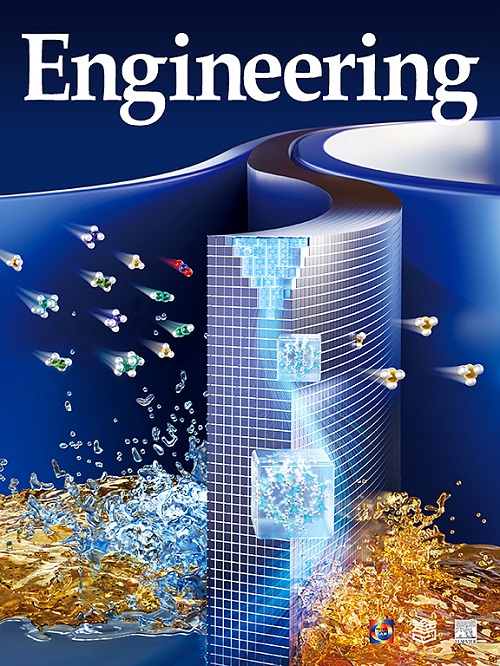Incorporating Single-Copper Sites and Host Defense Peptides into a Nanoreactor for Antibacterial Therapy by Bioinspired Design
IF 10.1
1区 工程技术
Q1 ENGINEERING, MULTIDISCIPLINARY
引用次数: 0
Abstract
A sustainable solution to the dramatic spread of antibiotic resistance threatening public health security is the development of antibiotic-free antimicrobial substances. Inspired by natural host defense mechanisms involving amino-terminal copper–nickel binding motif (ATCUN) antimicrobial peptides (AMPs), we have designed and prepared an artificial complex (Cu@G-AMPs) incorporating single-atom Cu catalysts for antibacterial therapy. The substrate of the complex, formed from guanine doped with abundant heteroatoms, anchored single Cu atoms with a coordination number of 2 and an average bond length of 1.91 Å. Interestingly, Cu@G-AMPs, exhibiting Fenton-like catalytic activity, caused the inactivation of methicillin-resistant Staphylococcus aureus (MRSA) by generating and delivering reactive oxygen species (ROS) cargo. Mechanistically, the intrinsic stress response system of MRSA underwent an irreversible collapse when Cu@G-AMPs initiated its offensive program associated with non-specific targets. Furthermore, Cu@G-AMPs, which inherited the immunomodulatory properties of AMPs, sequentially carried out the functions of pulling edge closure, stabilizing granulation tissue, promoting collagen fiber proliferation, alleviating inflammation, and promoting neovascularization in wound areas infected by MRSA. Our results show that Cu@G-AMPs will provide a new perspective on untangling the complex regulatory networks that resistant bacteria have cultivated to deactivate commercial antibiotics.
求助全文
约1分钟内获得全文
求助全文
来源期刊

Engineering
Environmental Science-Environmental Engineering
自引率
1.60%
发文量
335
审稿时长
35 days
期刊介绍:
Engineering, an international open-access journal initiated by the Chinese Academy of Engineering (CAE) in 2015, serves as a distinguished platform for disseminating cutting-edge advancements in engineering R&D, sharing major research outputs, and highlighting key achievements worldwide. The journal's objectives encompass reporting progress in engineering science, fostering discussions on hot topics, addressing areas of interest, challenges, and prospects in engineering development, while considering human and environmental well-being and ethics in engineering. It aims to inspire breakthroughs and innovations with profound economic and social significance, propelling them to advanced international standards and transforming them into a new productive force. Ultimately, this endeavor seeks to bring about positive changes globally, benefit humanity, and shape a new future.
 求助内容:
求助内容: 应助结果提醒方式:
应助结果提醒方式:


